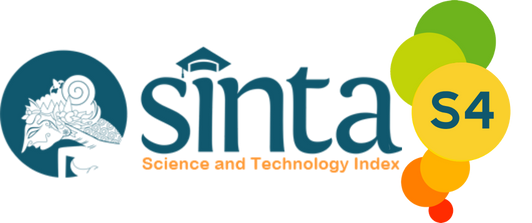ANALISIS SOSIOLINGUISTIK MEIREI HYOUGEN DALAM ANIME MOBILE SUIT GUNDAM IRON-BLOODED ORPHANS KARYA TATSUYUKI NAGAI
DOI:
https://doi.org/10.24036/omg.v7i1.693Keywords:
Analysis, Sosiolinguistic, Meirei Hyougen, GundamAbstract
Based Yokata (2007:140) meirei hyougen is when the speaker wishing an action or condition from listener.This study discusses the form and use of meirei hyougen related to speech acts contained in the anime Mobile Suit Gundam Iron Blooded Orphans in the second series of episodes 15-20. This research belongs to the type of qualitative research with descriptive qualitative method. The data in this study are conversations of characters containing meirei hyougen in the Mobile Suit Gundam Iron Blooded Orphans anime, the data source in this study is the Mobile Suit Gundam Iron Blooded Orphans anime in the second series of episodes 15-20. The instrument in this research is the researcher himself. in this study 66 meirei hyougen data were found, namely; 33 using verbs and command forms, 1 form (o~ kudasai), 1 form (~meizaru), 24 descriptive forms, and 7 forms (~kudasai, ~tekure, o~negaimasu from irai hyougen). But, there are also those that are not found namely; form (~nasai), form (~koto/~youni), form (~tamae). After finding the formation of meirei hyougen, we also found the factors behind its use through SPAKING theory. From 66 data, the factors that cause the use of meirei hyougen using SPEAKING theory are analyzed, including Setting/Scene, Participant, Ends, Act, Key, Instrumentalities, Norm and Genre.
References
Aghnia, M. C. (2012). Tingkat Sarjana bidang Senirupa dan Desain; Perancangan Anime Community Center. Jurnal Seni Rupa dan Desain. 1 (1), 1-6.
Chaer, Abdul, dan Leonie Agustina. (2010). Sosiolingustik Perkenalan Awal. Jakarta: Rineka Cipta.
Creswell, John W. (2016). Research Design Pendekatan Kualitatif, Kuantitatif, dan Mixed. Yogyakarta: Pustaka Pelajar.
Dirgantara, Muhammad Wahyu dkk. (2017). Penggunaan Kalimat Perintah Meirei Dalam Dorama Great Teacher Onizuka (Suatu Kajian Linguistik). 04, (02), 01-12.
Fauzy, Taufan Sultan Nur. (2018). Analisis Meirei Hyougen Dalam Anime Youjo Senki. Skripsi. Program Studi Pendidikan Bahasa Jepang. Universitas Muhammadiyah Yogyakarta.
Haq, Maulluddul dan Rahmalina, Reny dan Prisyanti Suciaty. (2023). Pelatihan pembuatan buku bacaan bahasa Jepang Tadoku, MGMP Bahasa Jepang. Jurnal Pengabdian Masyarakat Humaniora. Vol. 2, 2023, Hal. 92-106
(https://ejournal.unp.ac.id/index.php/abdi-humaniora/article/view/120231/107831) Diakses pada tanggal 20 Agustus 2023
Hidetoshi, Kenbou.(2001). Sanseido Kokugo Jiten. Japan: Sanseido.
Sugiyono. (2010). Metode Penelitian Kualitatif dan R&D. Bandung: Alfabeta.
_______. (2015). Metode Penelitian Kuantitatif, Kualitatif, dan R&D. Bandung: Alfabeta.
Sukmadinata, Nana Syaodih. (2007). Metode Penelitian Pendidikan. Bandung: Remaja Rosda Karya.
Sutedi, Dedi. (2003). Dasar-dasar Linguistik Bahasa Jepang. Bandung: Humaniora.
Yokota, Takashi. (2007). A Study of Imperative Sentences in Japanese Language Education. (https://www.hokurikuu.ac.jp/about/campus/libraryDATA/kiyo31/koku6.pdf) Diakses pada tanggal 28 Juli 2021
Yoshio, Ogawa. (1982). Nihongo Kyouiku Jiten. Tokyo: Taishuukan Shoten.
Yulia, Nova. (2010). “Bentuk Tsumori dan You To Omou yang Menyatakan Maksud: Kajian Struktur”. Jurnal Pendidikan Bahasa, Sastra, dan Seni, Vol. 11(1), 37-49).( http://ejournal.unp.ac.id/index.php/komposisi/article/view/73) Diakses pada tanggal 5 Maret 2021.
Yusuf, Muri. (2014). Metode Penelitian: Kuantitatif, Kualitatif, dan Penelitian Gabungan. Jakarta: Kencana Kajian Linguistik.
Zaim, M. (2014). Metode Penelitian bahasa. Padang: Fbs UNP Press








